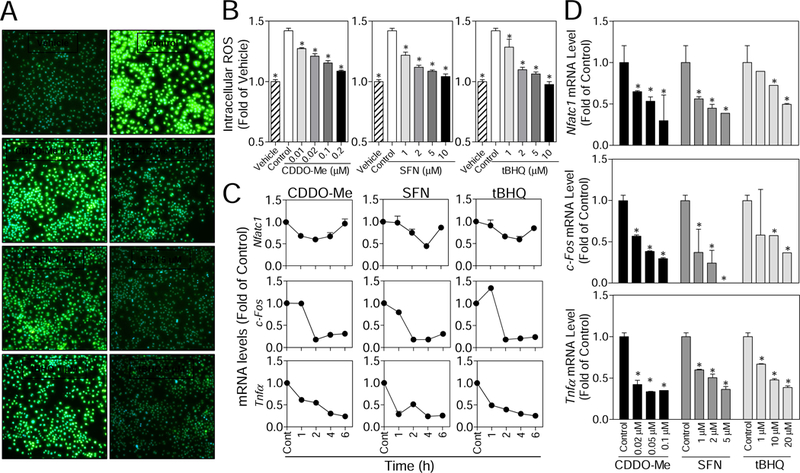Fig. 3.

CDDO-Me, SFN and tBHQ suppress the generation of RANKL-induced intracellular ROS and the expression of osteoclastic and inflammatory genes in RAW cells. (A) Merged images (100X) for CellROX Green fluorescence and DAPI in compounds-treated RAW cells. (B) Following the pretreatment of the compounds, the intracellular ROS levels induced by RANKL (100 ng/mL) were determined using DCF in RAW cells. Vehicle (without treatment); Control (only treated with RANKL); CDDO-Me, SFN and tBHQ (pretreated with indicated compounds and then RANKL). (C) RAW cells were treated with CDDO-Me (0.01 µM), SFN (5 µM) and tBHQ (10 µM) for the indicated time points (1, 2, 4 and 6 hours), and the osteoclastic genes (NFATC1, C-FOS and TNFα) were measured by RT-qPCR. (D) RAW cells were treated with various concentrations of CDDO-Me, SFN and tBHQ for 6 hours, and the osteoclastic genes (NFATC1, C-FOS and TNFα) were measured by RT-qPCR. All results were normalized to β-Actin. Cont, Control (normal culture medium); n = 3. *p < 0.05 vs. Cont.
